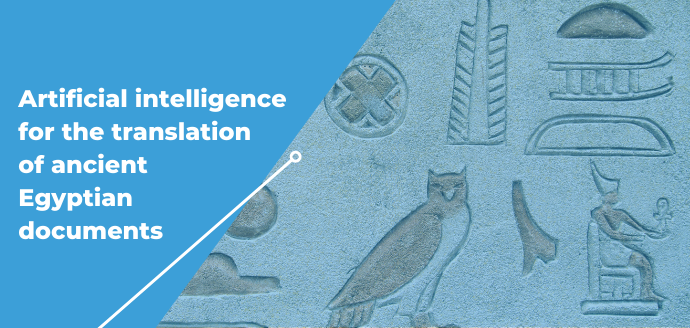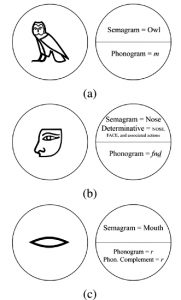
26 May Artificial intelligence for the translation of ancient Egyptian documents
A new study resulting from the collaboration between the CNR’s ‘Nello Carrara’ Applied Physics Institute, the Department of Information Engineering of the University of Florence and the CAMNES Research Centre highlights a new field of application for artificial intelligence: the translation of ancient texts.
The Study
Academics from the University of Florence and CNR-Ifac have used artificial intelligence to recognise and classify hieroglyphics. This is not the first time artificial intelligence is used to study languages that are no longer in use, but the authors of the study are the first to create semi-automatic tools capable of autonomously reading and deciphering Egyptian symbols.
Hieroglyphs are represented by a broad spectrum of ideograms. These ideograms can usually be assigned to around 26 categories and, when grouped, yield words and sounds. Hieroglyphs are written in different ways, such as monumental or cursive, in different orientations and different media such as papyrus, wood and stone.

Today, a civilisation that has lasted almost 5000 years has left behind a wealth of documents, which still have to be acquired, translated and interpreted. This is precisely where artificial intelligence comes into play, supporting the classification of ideograms and subsequent translation.
For this study, the researchers focused on the classification of individual hieroglyphs using the deep learning approach. Specifically, researchers opted to use architectures known as convolutional neural networks (CNN), a class of artificial neural networks commonly applied to analyse visual images and therefore considered the best choice for hieroglyphic recognition.
In particular, the ability of these neural networks to identify and classify ideograms was tested, with extremely promising results. The study not only demonstrated the feasibility of automatic translation of ancient Egyptian documents but also opened a new avenue toward a continuous and stable collaboration between the archaeology and artificial intelligence communities, to create new tools that facilitate the work of scholars of ancient civilisations’ writing.
The Fabricius platform
On the subject of artificial intelligence at the service of hieroglyphic translation, we should also mention Fabricius. The software was born from the collaboration between Ubisoft, Google and the Psycle development agency. It is the first digital, open-source tool able to help academics in the study of ancient languages by exploiting machine learning.
Big G’s machine learning platform uses Google’s AutoML technology to compare each pictogram with over 800 different drawings. By reading multiple drawings, the tool can understand each pictogram and also allows developers to train the machine quickly and easily.
The working platform is designed to facilitate the translation process for scholars and academics. Thanks to an elaborate artificial intelligence system, Fabricius can translate Egyptian hieroglyphics, saving scholars a lot of time since they don’t have to rely on much more laborious research in books.
As it can be easily guessed, it requires a deep understanding of the hieroglyphic translation process. For those who simply want to learn more about hieroglyphics, Fabricius has a section dedicated to interactive learning. In this section, users can learn the basics of writing and reading hieroglyphics. In addition, through an automatic composition tool, the platform allows users to write messages using hieroglyphics to share on social and messaging platforms.




